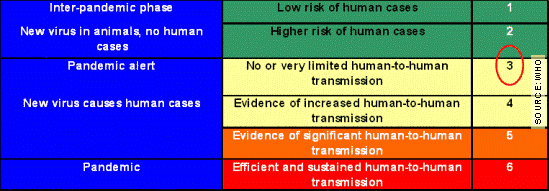 Over the centuries, epidemics have caused a large-scale loss of human life, with diseases such as the plague, smallpox, tuberculosis, leprosy, and cholera reaching truly catastrophic levels. In the 20th century alone, three Type A influenza pandemics occurred in 1918, 1957 and 1968, causing millions of deaths worldwide. Past epidemics have had, and continue to have, an unusually detrimental impact on society. In addition to epidemiological problems, countries faced other crisis management challenges. The actual number of cases of a disease can be less relevant than the presence of the disease itself. The six deaths from the anthrax scare in the United States or the 44 deaths from SARS in Canada caused enormous socioeconomic repercussions, demonstrating that we are not fully prepared to handle these crises.
Over the centuries, epidemics have caused a large-scale loss of human life, with diseases such as the plague, smallpox, tuberculosis, leprosy, and cholera reaching truly catastrophic levels. In the 20th century alone, three Type A influenza pandemics occurred in 1918, 1957 and 1968, causing millions of deaths worldwide. Past epidemics have had, and continue to have, an unusually detrimental impact on society. In addition to epidemiological problems, countries faced other crisis management challenges. The actual number of cases of a disease can be less relevant than the presence of the disease itself. The six deaths from the anthrax scare in the United States or the 44 deaths from SARS in Canada caused enormous socioeconomic repercussions, demonstrating that we are not fully prepared to handle these crises.
By late January 2006, the World Organization for Animal Health had already reported H5N1-type avian influenza in 19 countries. In that same period, the World Health Organization reported 152 confirmed human cases of H5N1-type avian influenza in five countries, resulting in 82 deaths. Preventive measures and disease control in birds are key to controlling the spread among the avian population and to stemming the mutation of the virus into one that can be easily transmitted from human to human. Once the transmission of this strain has taken root in the general population, the worldwide spread of the disease would be swift and practically inevitable.
Preparedness for a pandemic: a collective responsibility
Past influenza pandemics have taken the world by surprise, leaving insufficient time to respond adequately to the large number of patients and deaths or to the crises they have caused. Therefore, it is the responsibility of governments and communities to prevent such a scenario from occurring again. In Phase 3 (see chart on page 7,) the most effective way to prevent a pandemic is to limit, as much as possible, the circulation of the virus in animals.
 If prevention measures fail and a human pandemic virus emerges, with sustained person-to-person transmission, the beginnings of an influenza pandemic will be officially declared. This will oblige governments to take immediate steps beyond their routine response, activating multisectoral response mechanisms to deal with the potential crisis—with their own resources and with the technical leadership of the health sector.
If prevention measures fail and a human pandemic virus emerges, with sustained person-to-person transmission, the beginnings of an influenza pandemic will be officially declared. This will oblige governments to take immediate steps beyond their routine response, activating multisectoral response mechanisms to deal with the potential crisis—with their own resources and with the technical leadership of the health sector.
Prevention of and preparedness for a potential influenza pandemic requires collaboration among health, agriculture, other government sectors, international organizations, universities, research centers and the private sector, much along the lines of national disaster reduction and relief strategies currently in place in the Americas. This model could be used to bring together national and international capacities to solve a common problem that transcends institutional and sectoral boundaries.
Responding to a potential crisis
The public reaction alone to an influenza pandemic would be enough to produce a domino effect. For the health sector, this could mean an explosive increase in the number of persons (infected or not) seeking medical care. Consequently, countries will need to significantly expand the capacity of their health services, including emergency and routine services, intensive care and triage units as well as morgues.
Turmoil and absenteeism in all sectors of the work force are likely to occur due to fear of contracting the disease or actual illness itself. This would temporarily reduce capacity in many essential services such as health care, law enforcement, transportation, drinking water, power, telecommunications, and the economic and commercial sectors. Governments will be pressured into deciding whether or not to close places with high concentrations of people such as schools, markets, stadiums, commercial centers and public buildings.
Faced with a pandemic, national disaster offices should lead the set up an Emergency Operations Center and Committee, activate multisectoral readiness and response mechanisms, deploy emergency response teams, assign financial resources, and speed up routine logistics procedures. The emergency and disaster program of the Ministry of Health should also convene the Health Emergency Committee and promote multisectoral participation.
The health sector should also undertake other critical prevention and mitigation measures, such as risk communications, epidemiological surveillance, including the reporting of unusual events and the activation of an early warning system, prescribing and distributing antiviral medications, vaccinating high-risk populations (if and when a vaccine is available), and exchanging information among institutions and countries. Additional public health measures would include quarantine and isolation procedures, business and travel restrictions, and risk reduction recommendations for international transport.
 However, we should not lose sight of the fact that the risk of an influenza pandemic is just one of many public health risks countries are facing. Each month some 1.2 million people worldwide die from preventable diseases. With more than 45 million infected and 22 million dead, HIV/AIDS is poised to become one of the world’s worst human catastrophes. A balance must be struck between national health priorities and commitments to global health security.
However, we should not lose sight of the fact that the risk of an influenza pandemic is just one of many public health risks countries are facing. Each month some 1.2 million people worldwide die from preventable diseases. With more than 45 million infected and 22 million dead, HIV/AIDS is poised to become one of the world’s worst human catastrophes. A balance must be struck between national health priorities and commitments to global health security.
The media and the public will require clear direction and action from the highest levels of government, not only from Ministry of Health. The problem is potentially so great that all sectors must implement recommended measures in a coordinated fashion to control or mitigate the effects of the pandemic. The National Civil Protection Systems and Disaster Units in the Ministries of Health in Latin America and the Caribbean are key players in crisis management.
Authorities in other sectors, particularly agriculture and livestock, are critical to preventing the spread of the avian flu and reducing the risk of a pandemic virus emerging. If and when sustained human-to-human transmission is confirmed, the health sector must take the lead in implementing epidemiological surveillance and public health measures to try to contain or delay the course of the pandemic. Each week that countries can slow the pandemic represents an opportunity to reduce the economic and social impact.
Communicable diseases are bound to continue causing grave public health emergencies for decades to come. Although major efforts currently are underway in many sectors to deal with these risks, the health sector must actively involve and collaborate with other actors, a strategy which is not commonplace today. Stepping up preparedness now for an influenza pandemic—whether or not it materializes—is simply good for public health in general.
